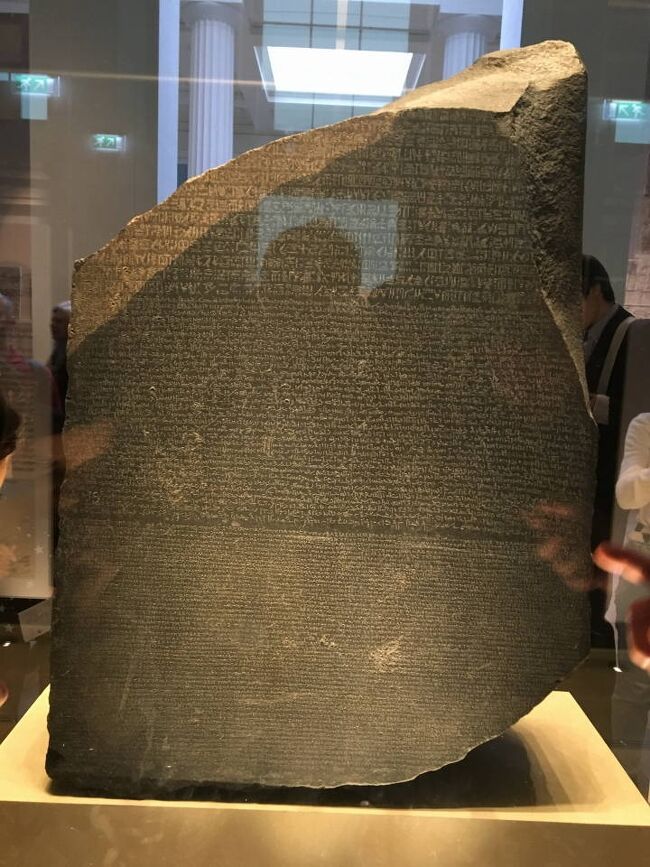
2020/02/08 - 2020/02/11
2746位(同エリア10328件中)
![]()
something like thatさん
- something like thatさんTOP
- 旅行記357冊
- クチコミ161件
- Q&A回答1件
- 348,401アクセス
- フォロワー24人
ヨーロッパに住んでいて今更、ロンドン観光。いつでも行けると思っていると結局行っていない典型的な例。
この旅行記は2020年2月のもの。見どころ満載の大英博物館にほぼ終日いました。(雨も降っていたこともあるけど)
2日目 ウェストミンスター大聖堂、大英博物館(前編)
ウェストミンスター大聖堂
Westminster Cathedral
大英博物館
The British Museum
(前半:エジプト、オリエント)
写真はロゼッタストーン。
見どころのひとつで中央のグレート・コートから入ってすぐのところにあります。
- 旅行の満足度
- 4.5
- 観光
- 4.5
- 同行者
- 一人旅
- 交通手段
- 徒歩
- 旅行の手配内容
- 個別手配
-
滞在しているホテルの最寄りの駅、ベイズウォーター駅Bayswaterから地下鉄に乗ろうとしたら、こんな案内。Circle lineが運休で200m先のQueensway駅(Central line)を使えとの案内。Victoria駅に行こうとしたときにピンポイントな情報。
-
Victoria駅到着。
-
ウェストミンスター大聖堂
Westminster Cathedral
https://westminstercathedral.org.uk/ -
ウェストミンスター大聖堂
Westminster Cathedral
ウェストミンスター大司教区の司教座聖堂であり、イングランドおよびウェールズで最大のカトリック教会である。
歴史
19世紀後半、ローマ教皇庁とイギリス国教会の関係が改善され、イングランドとウェールズにおけるカトリック教会が正式に復興し、司教らが再び着任した。1865年に亡くなった初代ウェストミンスター大司教ニコラス・ワイズマンを記念する大聖堂の建築が企画され、各地で資金が集められた。新教会の用地は1884年にワイズマンの後任であるエドワード・マニング大司教(枢機卿)が取得したが、二度にわたって建設計画は頓挫した(1867年のヘンリー・クラットンによる計画及び、1892年のバロン・フォン・ヘステルによる計画)。その後の1895年にマニング枢機卿の後任である第三代大司教ハーバート・ヴォーン枢機卿の時代にようやく建設が始まった。設計はジョン・フランシス・ベントリーであった。大聖堂はベントリーの死後の1903年に完成したが、予算の不足から内部装飾は予定どおりに完成せず、現代に至るまで未完成のままである。また未完成の教会や負債を返却していない教会堂の奉献を認めないという教会法の規定により、同聖堂の献堂式典は1910年6月28日を待たなければならなかった。
1982年、教皇ヨハネ・パウロ2世は6日間のイギリス訪問の初日にこの大聖堂を訪れてミサをたてた。
1995年にはウェストミンスター大司教ベイジット・ヒューム枢機卿の招きに応えて、女王エリザベス2世が大聖堂を公式訪問して典礼に参加した。イギリスにおいて現役の君主がカトリック教会を公式訪問するのはヘンリー8世以来のことであった。(wikiより) -
ウェストミンスター大聖堂
Westminster Cathedral
イングランド国教会は、16世紀(1534年)のイングランド王国で成立したキリスト教会の名称で、世界に広がる聖公会(アングリカン・コミュニオン)のうち最初に成立し、その母体となった教会。
イングランド教会、または聖公会内部では英国聖公会とも呼ばれる。
聖公会(アングリカン・チャーチ、英:Anglican Church)という名称は、アングリカン・コミュニオン(Anglican Communion)全体の日本語訳であると同時に、イングランド国外におけるイングランド国教会の姉妹教会の名称の日本語訳である。
元々はカトリック教会の一部であったが、16世紀のイングランド国王ヘンリー8世から女王エリザベス1世の時代にかけてローマ教皇庁から離別し、1534年に独立した教会となった。プロテスタントに分類されることもあるが、他プロテスタント諸派とは異なり、教義上の問題でなく、政治的問題(ヘンリー8世の離婚問題)が原因となって、カトリック教会の教義自体は否定せずに分裂したため、典礼的にはカトリック教会との共通点が多い。
立憲君主制であるイングランド(イギリス)の統治者である国王(イギリスの君主)が教会の首長(英語版)(Defender of the Faith、直訳は『信仰の擁護者』)であるということが最大の特徴である。1952年2月6日より現在、エリザベス2世女王がその地位にある。イングランド国教会の大主教であるカンタベリー大主教には、ジャスティン・ウェルビーがその職に就いている(第105代、在任:2013年1月10日 - )。 -
ウェストミンスター大聖堂
Westminster Cathedral
ビザンティン様式の建築家、ジョン・フランシス・ベントリーの手によるこの大聖堂は極めて特徴的な外観を有している。
その中の最たるものが、大時計塔、聖エドワードタワー(高さ約90m)そして前面の美しいアーチと柱の組み合わせである。
身廊(教会堂の中央部の会衆席の設置される場所)はイングランドの教会では随一の広さを誇り、また祭壇は身廊からみて1.5m上部に位置しているため、どの席からも印象的なモザイクが施され、ライトがともされた大理石製の飾り天蓋とその下の祭壇を拝み見ることができる。祭壇上のアーチに掲げられるイエス・キリストの大十字架は長さが10mある。十字架の正面にはキリストの姿が、そして裏面(祭壇に向かって正面)には嘆き悲しむ聖母の姿が描かれている。モザイクで飾り付けされた大理石製の大司教座はローマのサン・ジョバンニ・イン・ラテラノ大聖堂の司教座を模して作られている。(wikiより) -
ウェストミンスター大聖堂
Westminster Cathedral -
ウェストミンスター大聖堂
Westminster Cathedral -
ウェストミンスター大聖堂
Westminster Cathedral -
ウェストミンスター大聖堂
Westminster Cathedralウェストミンスター大聖堂 寺院・教会
-
大英博物館
The British Museum
大聖堂から地下鉄で戻る方向に移動し路線を乗り換え、大英博物館に到着。正面玄関は行列がすごいので、表玄関ではなく、裏口から入ります。 -
Room 4
ロゼッタ・ストーン
(エジプト、紀元前196)
ロゼッタ・ストーン(ロゼッタ石、仏: Pierre de Rosette, 英: Rosetta Stone)は、エジプトのロゼッタで1799年に発見された石柱。
紀元前196年にプトレマイオス5世によってメンフィスで出された勅令が刻まれた石碑の一部である。縦114.4cm、横72.3cm、厚さ27.9cm、重量760kg。古代エジプト期の暗色の花崗閃緑岩でできた石柱である。
碑文は上から、古代エジプト語の神聖文字(ヒエログリフ)と民衆文字(デモティック)、ギリシア文字の、3種類の文字が刻まれている。同一の文章が3種類の文字で記述されていると早くから推測され、1822年、ジャン=フランソワ・シャンポリオンもしくは物理学者のトマス・ヤングによって解読された。これによってロゼッタ・ストーンはエジプトのヒエログリフを理解する鍵となり、他の古代エジプト語の記録も解読が可能になった。(Wikiより) -
Room 4
ロゼッタ・ストーン
(エジプト、紀元前196)
https://artsandculture.google.com/streetview/british-museum/AwEp68JO4NECkQ?sv_h=233.95342305867266&sv_p=-0.3863796517693743&sv_pid=nZAoJvjL3c5lym7Un48xfQ&sv_lid=3582009757710443819&sv_lng=-0.127443557309789&sv_lat=51.51919938384948&sv_z=0.6158686808497829 -
Room 4
ロゼッタ・ストーン
(エジプト、紀元前196) -
Room 4
ロゼッタ・ストーン
(エジプト、紀元前196) -
Room 4
ロゼッタ・ストーン
(エジプト、紀元前196) -
Room 4
ロゼッタ・ストーン
(エジプト、紀元前196)
ロゼッタストーンの裏側。意外。 -
Room 4
ロゼッタ・ストーン
(エジプト、紀元前196) -
Room 4
ラムセス2世像「若きメムノン」
(エジプト、紀元前1250年)
エジプト第19王朝のファラオ、ラムセス2世の胸像。紀元前1250年頃のもの。
胸像の右胸のところにある穴は、ナポレオン・ボナパルト によるエジプト遠征(1798-1801年)時、遠征軍によって胸像を掘り出そうとした際につけられたと言われている。
https://artsandculture.google.com/streetview/british-museum/AwEp68JO4NECkQ?sv_h=4.580885322793051&sv_p=8.249434082017629&sv_pid=yPJoa8vvPsTHG1EPx76DPw&sv_lid=3582009757710443819&sv_lng=-0.1276890854588828&sv_lat=51.51929572237167&sv_z=0.6158686808497829 -
Room 4
ラムセス2世像「若きメムノン」
(エジプト、紀元前1250年)
裏にはヒエログリフ(神聖文字)が刻まれている。 -
Room 4
ラムセス2世像「若きメムノン」
(エジプト、紀元前1250年)
説明板より
King Ramesses II
This is the upper part of a colossal seated statue, one of a pair flanking the entrance to the hypostyle hall in the king's mortuary temple(the 'Ramesseum').
※ラムセス2世葬祭殿(ラムセウム)(Mortuary Temple of Ramesses Ⅱ- Ramesseum)
The statue was carved from one block, quarried at Aswan almost 200 kilometres further south. Roughly shaped and weighing some 20 tonnes, it was transported on sleds over land and on a purpose-built boat down the river Nile. Once erected, the finer sculpting was completed. Like all Egyptian statues, this was originally painted. Traces of pigment remain: black for the eye pupils, red for the skin, and blue and yellow for the stripes on the headcloth.
Ramesses II erected more colossal statues than any other pharaoh. Those at the Ramesseum are among the finest, showing the technical skills of the sculptors. Ramesses encouraged popular cults in which he was deified. Many of his colossihad their own name and were a focus for prayers.
deify(-ied):(…を)神とする、神に祭る、(…を)神としてあがめる、神格化する、(…を)神聖視する
19th Dynasty, reign of Ramesses II(about 1279-1213BC) From Western Thebes, mortuary temple of Ramesses II(Ramesseum)
Granodiorite and granite
Right:Inside the Ramesseum. The lower part of the British Museum colossus stands on the left. The head of its twin, with the crown largely intact, is visible on the right
Far right : Digital reconstruction of the statue of Ramesses II
(次写真) -
Room 4
ラムセス2世像「若きメムノン」
(エジプト、紀元前1250年)
Right:Inside the Ramesseum. The lower part of the British Museum colossus stands on the left. The head of its twin, with the crown largely intact, is visible on the right
Far right : Digital reconstruction of the statue of Ramesses II -
Room 4
ゲイヤー・アンダーソンの猫
The Gayer-Anderson Cat
Bronze with silver plaque and gold jewellery
Around 600BC
Possibly from Saqqara
https://artsandculture.google.com/streetview/british-museum/AwEp68JO4NECkQ?sv_h=51.09106031826381&sv_p=2.012919459121875&sv_pid=tBYuYuLnENhXQuDHyYLrUA&sv_lid=3582009757710443819&sv_lng=-0.1276608900190297&sv_lat=51.51936064181501&sv_z=0.7951201634183435 -
Room 4
ゲイヤー・アンダーソンの猫
The Gayer-Anderson Cat
Scientific discoveries
Scientists at the British Museum investigated the cat using X-ray fluorescence, a technique where a non-destrucitve X-ray is beamed onto an object and its reaction identifies the elements in the material. They discovered that the cat is made from bronze containing 84.7% copper, 13% tin, 2.1% arsenic and 0.2% lead.
They analysis also revealed layers of different metal alloys, so originally the cat may have had a stripy tail.
Major Gayer-Anderson owned the cat in the 1930s. The X-rays show that he repaired a large crack on the cat's body and wedged a metal cylinder inside its head, perhaps to keep the statue in one piece. The cat was then covered in green paint, which disguised many of the changes until it was X-rayed. -
Room 4
Stela of Prince Puheri
The Nile god Hapy kneels with offerings and blessing for the Horus and throne names of Sekhemkara, a minor king unknown from other sources. The dedicator of the stela, a prince Puheri, is named in the bottom text.
Sekhemkara ruled over a small region in the south-eastern Delta. He was a vassal king subservient to the Kushite kings of the 25th Dynasty. The style of the stela revives that of a much earlier period, in a trend led by his foreign overlords. Errors in the last two lines were clumsily fixed.
Dynasty of Tell Atrib, reign of Sekhemkara, about 700BC
From Tell Atrib
Limestone -
Room 4
Relief with four figures of Bes
The popular dwarf god Bes, guardian of mothers and infants, brandishes((脅すように, 得意そうに)振り回す, 打ち振る) a sword while seizing a snake. He was a ferocious protector of the family, much relied upon to ward off evil. He featured prominently(顕著に) at shrines concerned with childbirth and sexuality, and his powers served humans as well as the gods. In Roman times he also become a military god.
Late Ptolemaic or early Roman Period, 1st century BC or AD
Provenance unknown
Limestone
ベス(Bes)は、古代エジプト神話の舞踊と戦闘の神。本来は、羊と羊飼いの守護神とされていた。また、夢を司る神でもある。その名前は、「ベサ(守る)」から来ていると見られている。その姿は、植物の冠、豹の毛皮(ベス)を身に着け、大頭で短躯、ガニ股で立って舌を出した大口の異様な様子で表される。手には、護符、ナイフ、楽器、子供をあやす道具あるいは、子供を抱いている場合もあった。エジプトの外からもたらされた神であるためか他の神と違い横向きではなく正面を向いて描かれている。ナイフを振り回すか、自ら楽器を鳴らしながら踊り、邪気を払う。酒宴や婚礼をも司り、出産・病気から女性や子供を守るという。また魔除けとして装飾に使われた。
妻は、ベセト。子守の神としてタウエレト、音楽の神としてハトホル、生殖の神としてミン、戦闘の神としてホルスと関連付けされた。(Wikiより) -
Room 4
Stela of Puinpu
Puinpu, a priest of Horus, worships the divine triad of Osiris(ruler of the Dead), the falcon-headed Horus(Osiris' son and earthly heir, hence his crown of Upper and Lower Egypt) and Isis.
The prayer below invokes thousands of offerings for Puipu's spirit. As usual, the hieroglyphs were painted blue, the colour of water and air, to bring their content to 'life' and aid its magical fulfilment. Also visible is the draughtsman's initial design, drawn in red outlines before the sculptor applied his chisel.
26th Dynasty, about 600BC
From Abydos
Limestone -
Room 4
Temple relief of King Osorkon II
When complete this scene showed Osorkon offering a clepsydra(water clock) to the snake goddess Wadjyt. He wears the double crown of Upper and Lower Egypt(※). Osorkon's wife, a plumed crown with sun-disc and holds a flywhisk(払子) and ankh(アンク十字), the hieroglyphic symbol of life. Her portly figure reflects the female ideal of the time.
22nd Dynasty, reign of OSorkon II(about 874-850BC)
From Bubastis(Tell Basta), temple of Bastet
Granite
アンク (古代エジプト語ラテン翻字: Ankh) は、古代エジプトで使用された「生命」あるいは「生きること」を意味する言葉で、それを表わすヒエログリフを象ったものは護符(お守り)や装飾の図柄として良く使われている。エジプト十字(エジプトじゅうじ)とも呼ばれる。
アンクの力を信じる者は一度だけ生き返ることができると信じられている。
アンクは、現世(此岸)と来世(彼岸)の間にある「境界」を無事に超えるための、通行証である。(「境界」を超えて、来世に渡ることができれば「復活」できる。)
もともと「 Ankh 」という古代エジプト語自体が生命を意味しており、生命的宗教的象徴とされる。ヒエログリフにおいては Ankh や Anx 音を表す文字としても用いられており、ツタンカーメンも Tut-ankh-amen の ankh の部分にこの文字が用いられている。
ラテン十字の上部がループ状の楕円となった形状をしており、サンダルの紐を模ったものとも言われる(早稲田大学古代エジプト謂査隊「この文字の形は、サンダルの鼻緒の結び目を表わしており、これがアンクという音を持っていたことから、同じアンクという音の生命の意味も示すようになった」)。
現在のエジプトではエジプトの象徴であるとも言われている。(Wikiより)
※王冠の形について
先の尖った上エジプト冠(Upper Egypt)、平たい下エジプト冠(Lower Egypt)、2つが合わさった二重冠。この二重冠を被っているファラオは、上・下エジプトを統一された時のファラオ。 -
Room 4
Arms-bearer of Tiglath-pileser III(ティグラト・ピレセル3世)
Assyrian, about 728BC
From Nimrud(ニムルド), Central Palace(中央宮殿)
The king is displayed to the right.
ティグラト・ピレセル3世(Tiglath Pileser III、在位:紀元前745年 - 紀元前727年)は古代メソポタミア地方の新アッシリア帝国の王である。弱体化していた新アッシリア帝国の王権を強化するとともに、帝国の軍事・政治システムを大幅に改良して効率化・安定化を図った。アッシリア初となる常備軍を創設し、周辺諸国を攻撃して領土を広げ、アッシリアの最盛期と言われる時代の端緒を開いた。
ティグラト・ピレセルは近東地域の多くの国を従属させた。南では同じメソポタミア人であるバビロニアとカルデア、そのさらに南ではアラブ、マガン、メルッハ、アラビア半島のディルムン人。南西ではイスラエル、ユダ、ペリシテ、サマッラ、モアブ、エドム、ステアン、ナバテアを屈服させた。北ではウラルトゥ、アルメニア、コーカサス山脈のスキタイ、黒海付近のキンメリア、ナイリが従属した。北西ではヒッタイト、フリュギア、キリキア、コンマゲネ、タバル、コードゥエンスとカリアを含む小アジアの東部と南西部。西では、キプロス等のギリシア人とアラム(現代のシリア)、地中海のフェニキアやカナンの都市国家をも従属させた。東ではペルシア、メディア、グティウム、マンナエ、シッシアとエラムが服属した。治世の後半には、彼はバビロニア王にもなった。
ティグラト・ピレセル3世は、帝国中において何千人もの人を強制移住させ、アッシリアの支配に対する反乱の意欲を失わせた。彼は、世界史において最も成功した軍事司令官の一人である。アッシリア人が知る世界の大半を、彼が生きている間に征服した。
聖書には、ティグラト・ピレセル3世(聖書においては「プル」)がイスラエル王メナヘムに1000キカルの銀を要求し(列王記下15:19)、その後、ペカの時代に攻めてきて住民を連れ去った(列王記下15:29)ことが記されている。
ティグラト・ピレセル3世の征服と改革は、新アッシリア帝国を強固なものへと変え、それは帝国の将来の青写真とでも言うべきものだった。彼はカルフに宮殿を建てた(聖書ではカラまたはニムルド。いわゆる中央宮殿)
ここでいきなり、メソポタミア? -
Room 4
Queen Ahmose-Merytamun(イアフメス=メリトアメン)
The cobra emblem on the forehead and the Hathoric wig confirm this is a queen. Just as pharaohs were deemed an incarnation(化身) of Horus(ホルス), so did queens embody the goddness Hathor(ハトホル). Ahmose-Merytamun was a sister and wife of Amenhotep I.
The bust comes from a seated statue. The lower part, with texts indentifying the owner, is still in the temple of Amun-Ra in Karnak. It stands before one of the temple's massive gateways called 'pylons', beside a colossal seated statue of Amenhotep I himself.
18th Dynasty, reign of Amenhotep I (about 1525-1504BC)
From Thebes, Karmnak, temple of Amun-Ra
Limestone
イアフメス=メリトアメン(Ahmose-Meritamun)は、 エジプト第18王朝の女王。イアフメス1世とイアフメス=ネフェルタリの娘であり、エジプト第18王朝時代に、弟のアメンホテプ1世と結婚した。つまり、ファラオであったアメンホテプ1世の姉かつ妻だった。 -
Room 4
The goddness Sekhmet(セクメト)
Based on its size, style and exquisite(非常に美しい, 精巧な, 優雅な) workmanship, there can be no doubt that this statue was made during the reign of Amenhotep III, like the four Sekhmet statues on the left and many more. However, the only inscriptions it bears today, on the front sides of the throne, display cartouches with the throne and birth names of Sheshonq I(シェションク1世), who founded the 22nd Dynasty around 945BC. He lived at a time of less prosperity and the usurpation of ealier statues, both by royal and private individuals, was now a common practice.
18th Dynasty, reign of Amenhotep III(about 1390-1352BC)
From Thebes, Karnak, temple of Mut
Granodiorite
シェションク1世(Sheshonk IまたはShoshenq I、在位:紀元前945 - 924年頃または前943 - 921年頃)は古代エジプト第22王朝の初代ファラオ。即位名は「明るきはラーの出現、ラーに選ばれしもの」を意味するヘジュケペルラー・セテプエンラー。
史上初となるリビア系エジプト人による王朝を創設し、二つに分断されていた政治権力を再統合した。また、イスラエル王国に遠征を行い、旧約聖書においてエジプト王シシャクとして記録されている。 -
Room 4
The goddness Sekhmet(セクメト)
セクメト (Sekhmet) は、エジプト神話に登場する女神。プタハの妻であり子供には、ネフェルトゥムがいる。ラーの片目(右目とも左目とも)から生まれ、ライオンの頭を持つ。頭頂に赤い円盤を載せており真昼の太陽の灼熱を表現している。破壊神にして復讐者であり、王の守護神とされる。夫プタハ、息子ネフェルトゥムと共にメンフィス三柱神を構成する。伝染病をもたらす神とされ、「火のような息」を吹くと恐れられたほか、戦いの女神でもある。一方で家庭では、穏やかな女神になるという。同じ獅子頭の女神であるバステトやテフヌトと同一視されることもあり、レトポリスやメンフィスで信仰されていた。(wikiより) -
Room 4
アメンホテプ3世の頭部像
アメンホテプ3世(英: Amenhotep III)は、古代エジプト第18王朝の第9代ファラオ(王)(在位:紀元前1386年 - 紀元前1349年、または紀元前1388年 - 紀元前1351年)。即位名はネブマアトラー。「真実の主はラーなり」の意。正妻はティイ。子はアメンホテプ4世など。
トトメス3世、トトメス4世の時代を経て絶頂に達した王国を継承した。在位期間も長く、40年近くに及んだ。アメン神を崇敬すること篤く、テーベにカルナックのアメン神殿と直結する分神殿としてルクソール神殿を建設している。このほか、同地に広大な自身の葬祭殿も建設している。葬祭殿は後に後代の王たちによって破壊されたが、メムノンの巨像と呼ばれる彼の坐像は破壊されずに残り、現在でも形をとどめている。(wikiより) -
Room 4
Statue of King Sobekemsaf I or II(セベクエムサフ1世、もしくは2世)
This is one of jsut a few surviving royal statues from the late Second Intermediate Period, when southern Egypt was ruled from Thebes. Two of its kings had the birth name Sobekemsaf, but their order and chronological positions remain disputed.
Sculpture of the period is often crude and highly stylised, a faint echo of the masterpieces created two centuries earlier.The king's waist, for instance, is much too narrow. However, his eyes received exceptional attention. Dowel holes in the brows and cosmetic lines helped to secure inlaid eyes as well as overlays. The pupils, for instance, were probably made of rock crystal or obsidian.
The back of the throne bears a text invoking protection for the king, flanked by figures of the hippopotamus goddess Ipi. Her appearance on an official monument is unexpected. Ipi's usual place was on objects designed to ward off evil such as magical wands. Her presence here may reflect the uncertainties of the time, when Egypt's independence was curbed by the Hyksos in the north and by Kush in the south.
Late 16th or early 17th Dynasty, about 1600BC
From Thebes, Karnak, temple of Amun-Ra
Granite -
Room 4
プタシェプセ(プタハシェプセス)の偽扉 -
Room 4
プタシェプセ(プタハシェプセス)の偽扉
これがオーディオガイドの表示。刻まれた文字がわかりやすい。 -
Room 4
プタシェプセ(プタハシェプセス)の偽扉
False door and architecure of Ptahshepses
野菜の絵が結構、緻密。 -
Room 4
プタシェプセ(プタハシェプセス)の偽扉
False door and architecure of Ptahshepses -
Room 4
プタシェプセ(プタハシェプセス)の偽扉
False door and architecure of Ptahshepses
Egyptian tomb inscriptions typically focus on the afterlife, but this door includes unique account of the owner's remarkable life. Born in the reign of Menkaura(メンカウラー、エジプト第4王朝のファラオ(6代目)在位:BC2532~2504年), Ptahshepses grew up at the royal palace and married a daughter of the next king. Ptahshepses' career spanned the reign of at least six further pharaohs. King Neferirkara allowed him to greet the ruler by kissing his foot - an exceptional favour. Courtiers normally had to kiss the ground, as pharaohs were deemed half divine.
Right: Passive mentioning the kissing of the king's foot. The word for 'kissing' is written with a bulbous sign that represents a nose. Further down one recognises the sign for 'foot'.
さて、どれが、「キスする」かな。上から2つ目?足は分かりやすいけど。
5th Dynasty about 2400BC
From Saqqara, tomb of Ptahshepses
Limestone -
Room 4
Sarcophagus((大理石製の古代の)石棺)
Sarcophagi(stone coffins) were reserved for royalty and the elite. The panel design depicts a palace facade. The side that faced east includes two false doors. Most Egyptian tombs lie on the edge of the western desert, so the dead were buried facing east, towards the living-who brought them offerings.
An incription on the same side, near top, named the owner but was erased, perhaps to curse him. The bosses on the lid served to manoeuvre it in place.
5th Dynasty, about 2400BC
From Giza, tomb LG98
Granite -
Room 4
King Amenhotep III as a lion
This statue and its companion declare the king's might by representing him as a lion.
Pharaohs were often shown as a sphinx with the body of a lion, but the full lion image is rare. An inscription on the chest, added by Amenhotep IV, calls the king a 'lion of rulers, wild when he sees his enemies tread his path'. The sculptures are famed for their realistic anatomical(解剖(学)上の) detail and depart from the frontality of most Egyptian statues. The eyes were originally inlaid.
18th Dynasty, reign of Amenhotep III (about 1390-1352BC)
From Napata(Gebel Barkal, Sudan), originally from Soleb(Sudan)
Granite -
Room 4
King Amenhotep III as a lion -
Room 4
エジプト王のリスト
King-list -
Room 4
エジプト王のリスト
King-list
カルトゥーシュ
カルトゥーシュ (cartouche) は、古代エジプトで使われていたヒエログリフの文字(記号)の1つで、ファラオの名前を囲む曲線。古代エジプトではシェヌと呼ばれる文字であり、シェンを細長く伸ばしたものである。現在でも壁画などに描かれたファラオの名にカルトゥーシュを確認することができる。カルトゥーシュは小銃の実包を意味するフランス語で、英語ではカートリッジ (cartridge) にあたる。形状が似ていることからこのように呼ばれるようになった。
カルトゥーシュは、もともとロープの象形文字であり"取り囲むこと・永遠"を意味していた。周りを取り囲み、ファラオの名前を囲み保護しているのである。棒状の部分が結び目をあらわしており、名前は結び目の反対側から読み始める。 カルトゥーシュでファラオ名を囲み始めたのはエジプト古王国第4王朝のスネフェルからとされる。(wikiより) -
Room 4
エジプト王のリスト
King-list -
Room 4
エジプト王のリスト
King-list
Monumental lists of past kings expressed the living ruler's legitimacy(正統性). Originally Ramesses was shown on the far right, honouring previous kings and the god Osiris(still partly visible on the left). The kings are represented by their throne names, written row mentions little-known kings of the 7th and 8th Dynasties. The middle row lists those of the 12th, 18th and 19th Dynasties. Rulers deemed unimportant or illegitimate(私生の, 嫡出(ちやくしゆつ)の), including ruling queens, have been omitted.
Above: The section that deals with 18th Dynasty. The '1' marks where the list omits Hatshepsut, a queen who had ruled like a king. The '2' marks the omission of four rulers associated with the 'heretic' Amarna Period(アマルナ時代): Amenhotep IV/Akhenaten, Smenkhkara, Tutankhamun and Ay.
アマルナ時代
古代エジプトの第18王朝の、首都がテル・エル・アマルナに存在し、太陽神アテンの信仰がより一層に盛んであったアメンホテプ4世(アクエンアテン、アメンヘテプ)の治世の歴史的・美術史的呼称。厳密には、エジプト新王国第18王朝、アメンホテプ4世の治世の、紀元前1417年ごろから前1362年ごろまでの時代をいう。
この時代では、アメンホテプ4世の改革の影響によりアテン神が崇拝されるようになり、古代エジプト元来のアメン・ラーの信仰は停滞し、後に「アマルナ美術」と呼ばれる事と成る美術が花開いた。宗教的・社会的改革(アテン信仰)が行われ、それに伴って文学・美術上の写実主義・自然主義的傾向が顕著となった。後にアメンホテプ4世の息子・ツタンカーメンによってアメン・ラーの信仰が復活され、アテン神の信仰は止められ、アマルナ時代も終焉を告げた。
「アマルナ時代」と便宜される時代は、ファラオアメンホテプ4世とその女王ネフェルティティの王宮が現在のアマルナ(英語:Amarna)に移されたエジプト第18王朝の後半頃の古代エジプト王国の歴史の時代であった。エジプトの多神教の劇的な変化を反映するために、また、エジプトの多神教の劇的な変化を反映するために、アメンホテプ4世の治世に行われた改革によってアマルナ時代は始まった。
アメンホテプ4世は唯一神アテンのみを祭る他のエジプトのみならず世界で初となる一神教を確立した。また、アテンだけではなく伝統的なエジプト宗教と同じくアメンホテプ4世自身も神である、と民衆に説いた。王たるアメンホテプ4世自身も神であるとされ、その為に壁画には特異な姿で描かれたとも云われている。
アテンは恵みをもたらし、神たる王を守護する神であり、アテンはアメンホテプ4世とその王族だけの為の神だった。アテンは太陽円盤の形で数多くの手を持つ姿であり、通常のエジプトの宗教とは異なり民衆にはアテンを崇拝するのではなく、アメンホテプ4世を唯一の神として崇拝するよう説いた。これまでの宗教では王の上に更に神官団が存在し、神アメンを利用して横柄な行為を繰り返すことによって、本来の頂点たる王の権威は著しく低下していたが、王自らを神であるとして権威を高めようとしたのである。なお、アテン神の最初期の正式な名称は(公式名)は「アテンとして帰って来た父ラーの名によって、地平線で歓喜する地平線の支配者ラー」であり、あくまでラーの変化した体系であるとしたが、後に、最初の部分の「アテンとして帰って来た父ラーの名によって、地平線で歓喜する」と最後の「ラー」の名が削除されることになった。(wikiより) -
Room 4
エジプト王のリスト
King-list -
Colossal guardian lion
Assyrian, about 865-860BC
From Nimud, Temple of Ishtar
Sharrat-niphi
This fierce, 15-ton lion symbolised Ishtar, the Assyrian goddess of war, and guarded the entrance to her temple. The cuneiform inscription gives the name of the temple's builder, Ashurnasirpal II(883-859BC). The lion is one of a pair excavated by Austen Henry Layard in 1850. A second pair was found by Iraqi archaeologists in 2001. -
Colossal guardian lion
Assyrian, about 865-860BC
From Nimud, Temple of Ishtar
Sharrat-niphi -
Eagle-headed protective spirit
Assyrian, about 865-860BC
From Nimrud, Temple of Ninurta -
Room 6
人面有翼獅子像
Human-headed winged lion
Assyrian, about 865-860BC
From Nimrud, North-West Palace, Room B, door A, panel 1
Nimrudニムルドはアッシリアの首都。
This is one of a pair of lions that flanked a doorway in the ftroneroom of Ashurnasirpal II(883-859BC)(アッシュールナシルパルⅡ世). They provided magical protection for the building and wear ropes, like other protective lions. The five legs suggest that they were intended to be viewed from the front or the side, not from an angle. Reliefs from the same throneroom are in Room7. -
Room 6
人面有翼獅子像
Human-headed winged lion
Assyrian, about 865-860BC
From Nimrud, North-West Palace, Room B, door A, panel 1
斜めから見ると足が5本あります。 -
Protective spirit
Assyrian, about 865-860BC
From Nimrud, Temple of Ninurta
This is one of a pair of heroic royal figures, each dressed in a tunic and fringed mantle and holding a flowering branch. They guarded the outer face of the doorway into the Temple of Ninurta, chief god of the city of Nimrud and Assyrian god of war and farming. The temple was built by King Ashurnasirpal II(883-859BC) -
Stela of Shamshi-Adad V(823-811BC)
Assyrian, about 814BC
from Nimrud, Temple of Nabu
This stela shows the king worshipping in front of symbols of the gods. The large cross on his chest is a symbol of the sun god. His dress and beard indicate his role as king of Babylon after the defeat of Marduk-balassu-iqbi in 814BC. The inscription is an account of the king's campaigns until about 814BC. It is written in a type of cuneiform(くさび形文字) used 1000 years earlier, apparently to give an inpression of great age and authority. -
Attendant god
Assyrian, about 810-800BC
From Nimrud, Temple od Nabu
This divine attendant stood outside a doorway in the Temple of Nabu, god of writing. The inscription mentions Adad-nirari III(810-783BC) and his powerful mother Sammuramat, the original Semiramis, whose legendary exploits were recorded by the Greeks. It ends by advising the reader to revere Nabu; 'do not trust in another god'. -
Eagle-headed protective spirit
Assyrian, about 865-860BC
From Nimrud, North-West Palace,
Room G, panel d 1 -
Symbolic-scene
Assyrian, about 865-860BC
From Nimrud, North-West Palace
Room B, panel 23 -
Symbolic-scene
Assyrian, about 865-860BC
From Nimrud, North-West Palace
Room B, panel 23 -
Court scene
Assyrian, about 865-860BC
from Nimrud, North-West Palace
Room G, panels 2-4
King Ashurnasirpal is enthroned between attendants, and the group is flanked by a pair of winged protective spirits. The workmanship of these panels, from the head of what was possibly a banquet hall, is exceptionally fine. Detailed patterns are represented by delicate incisions on the clothes. There are traces of paint on the sandals. -
Winged human-headed bull
Assyrian, about 865-860BC
From Nimrud, North-West Palace
Room S, door e, panel 1
こちらは胴体が雄牛。 -
アッシリアの宮殿を装飾したレリーフ
-
The manufacture and transport of a colossal stone bull
These reproductions show the story as a whole. It runs from right to left. The entire sequence contained seven or eight separate scenes, but many panels are now lost. They formed part of the decoration of Court VI in the South-West Palace at Nineveh, carved about 700-692BC. -
The manufacture and transport of a colossal stone bull
ちょっとわかりにくい。 -
The manufacture and transport of a colossal stone bull
-
The manufacture and transport of a colossal stone bull
-
The manufacture and transport of a colossal stone bull
-
The manufacture and transport of a colossal stone bull
-
Khorsabad
The palace of Sargon
This area mainly contains sculptures from the city and palace of Khorsabad, built for the Assyrian king Sargon II(721-705BC). The pair of human-headed winged bulls stood originally at one of the gates of the citadel, as magic guardians against misfortune. -
Khorsabad
The palace of Sargon
This area mainly contains sculptures from the city and palace of Khorsabad, built for the Assyrian king Sargon II(721-705BC). The pair of human-headed winged bulls stood originally at one of the gates of the citadel, as magic guardians against misfortune. -
Room 10
The royal lion hunt
アッシリアのライオン狩りのレリーフ
Assyrian, about 645-635BC
From Nineveh(ニネヴェ), North Palace,
Room C, panels 15-17
On the right a line of soldiers with high shields ring the area to prevent lions escaping. A lion is released from its cage by a small person, possibly a child, lifting a trapdoor; he has a cage of his own in which to hide, Horsemen prepare to drive ot lure the lion towards the chariot og Ashurbanipal, the king.
アッシリアのアッシュールバニパル王がライオン狩りをする様子。
古代都市ニネヴェの遺跡から発掘されたもの。 -
Room 10
The royal lion hunt
アッシリアのライオン狩りのレリーフ
Assyrian, about 645-635BC
From Nineveh(ニネヴェ), North Palace,
Room C, panels 15-17 -
Room 10
The royal lion hunt
アッシリアのライオン狩りのレリーフ
Assyrian, about 645-635BC
From Nineveh(ニネヴェ), North Palace,
Room C, panels 15-17
ライオンの檻の扉を開けている子供? -
Room 10
The royal lion hunt
アッシリアのライオン狩りのレリーフ
Assyrian, about 645-635BC
From Nineveh(ニネヴェ), North Palace,
Room C, panels 15-17 -
Room 10
The royal lion hunt
アッシリアのライオン狩りのレリーフ
Assyrian, about 645-635BC
From Nineveh(ニネヴェ), North Palace,
Room C, panels 15-17 -
Room 10
The royal lion hunt
アッシリアのライオン狩りのレリーフ
Assyrian, about 645-635BC
From Nineveh(ニネヴェ), North Palace,
Room C, panels 15-17 -
Room 10
The royal lion hunt
アッシリアのライオン狩りのレリーフ
Assyrian, about 645-635BC
From Nineveh(ニネヴェ), North Palace,
Room C, panels 15-17 -
Room 10
The royal lion hunt
アッシリアのライオン狩りのレリーフ
Assyrian, about 645-635BC
From Nineveh(ニネヴェ), North Palace,
Room C, panels 15-17 -
Room 10
The royal lion hunt
アッシリアのライオン狩りのレリーフ
Assyrian, about 645-635BC
From Nineveh(ニネヴェ), North Palace,
Room C, panels 15-17 -
Room 10
The royal lion hunt
アッシリアのライオン狩りのレリーフ
Assyrian, about 645-635BC
From Nineveh(ニネヴェ), North Palace,
Room C, panels 15-17 -
Room 10
The royal lion hunt
アッシリアのライオン狩りのレリーフ
Assyrian, about 645-635BC
From Nineveh(ニネヴェ), North Palace,
Room C, panels 15-17 -
Room 10
The royal lion hunt
アッシリアのライオン狩りのレリーフ
Assyrian, about 645-635BC
From Nineveh(ニネヴェ), North Palace,
Room C, panels 15-17 -
Room 10
The royal lion hunt
アッシリアのライオン狩りのレリーフ
Assyrian, about 645-635BC
From Nineveh(ニネヴェ), North Palace,
Room C, panels 15-17
ようやく、この展示エリアから脱出。
https://artsandculture.google.com/streetview/british-museum/AwEp68JO4NECkQ?sv_h=38.311730916995245&sv_p=-13.168791854044017&sv_pid=bftTsj21HD2KSp_LVTX8pA&sv_lid=3582009757710443819&sv_lng=-0.1275101515366543&sv_lat=51.51881572924155&sv_z=0.7321335451616713
利用規約に違反している投稿は、報告する事ができます。
コメントを投稿する前に
十分に確認の上、ご投稿ください。 コメントの内容は攻撃的ではなく、相手の気持ちに寄り添ったものになっていますか?
サイト共通ガイドライン(利用上のお願い)報道機関・マスメディアの方へ 画像提供などに関するお問い合わせは、専用のお問い合わせフォームからお願いいたします。
something like thatさんの関連旅行記
この旅行で行ったスポット
ロンドン(イギリス) の旅行記
旅の計画・記録
マイルに交換できるフォートラベルポイントが貯まる
フォートラベルポイントって?





















































































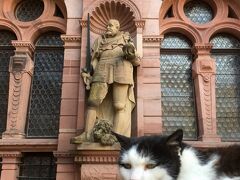
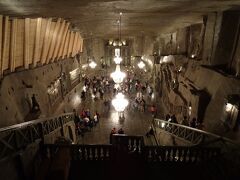


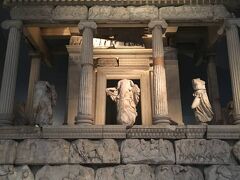
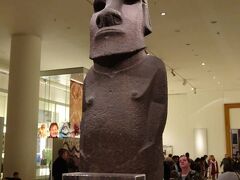






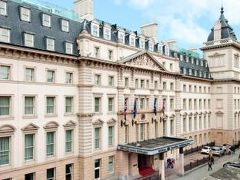





0
82